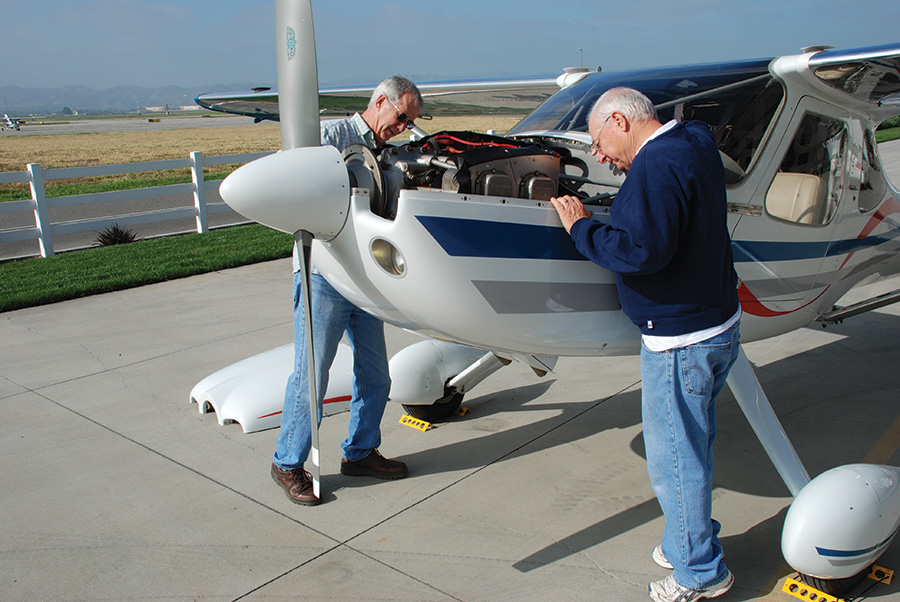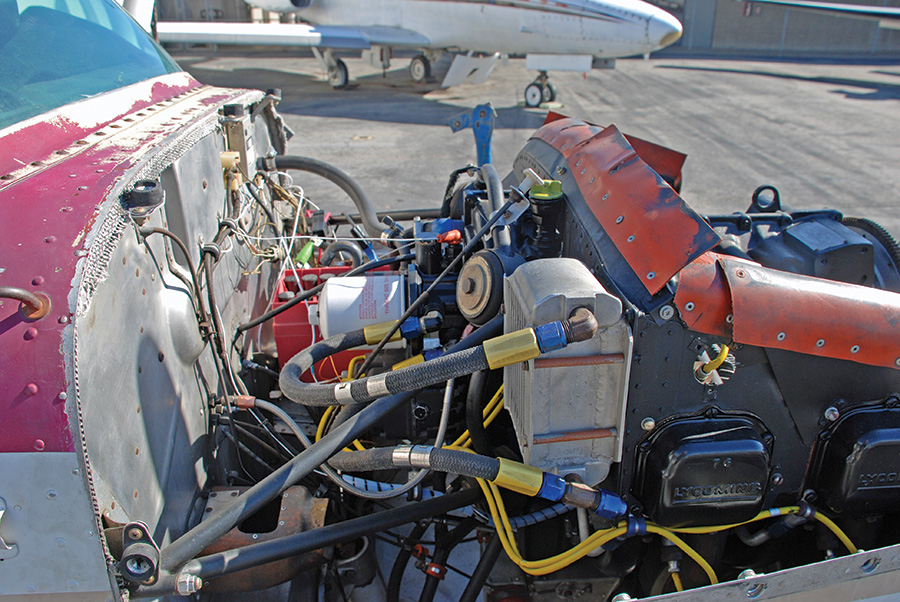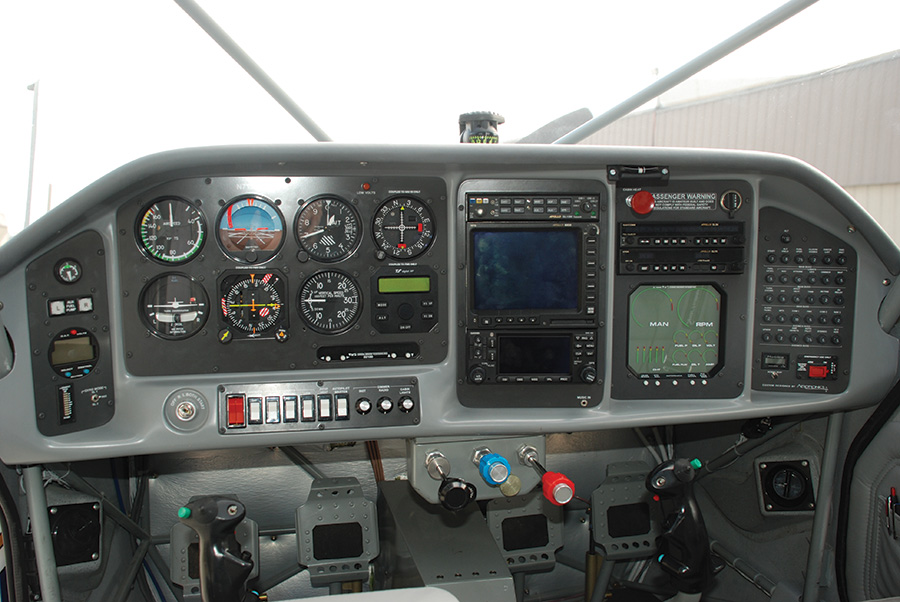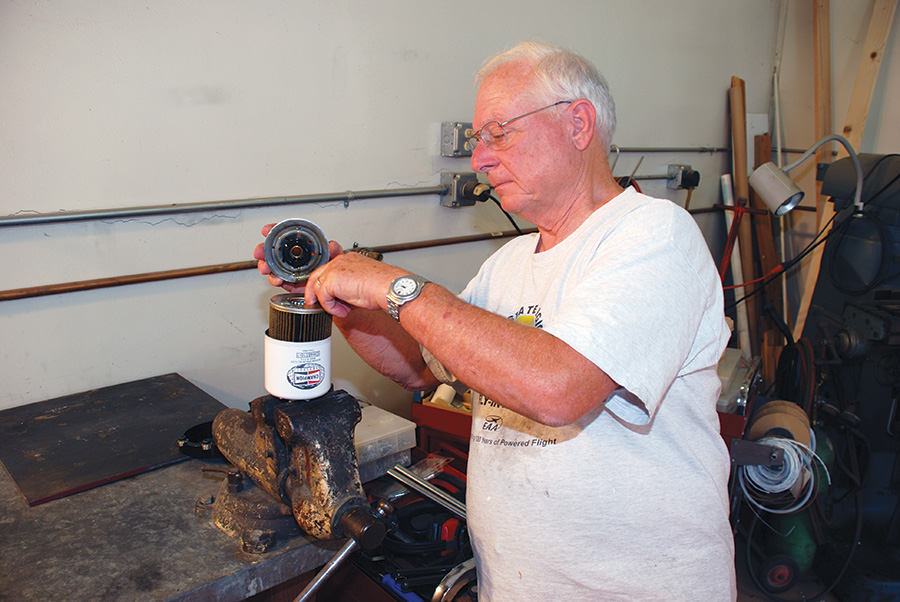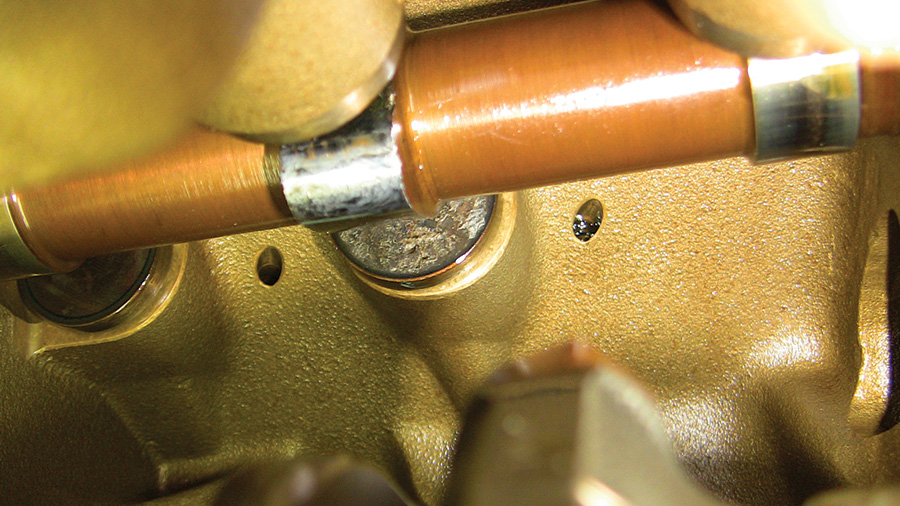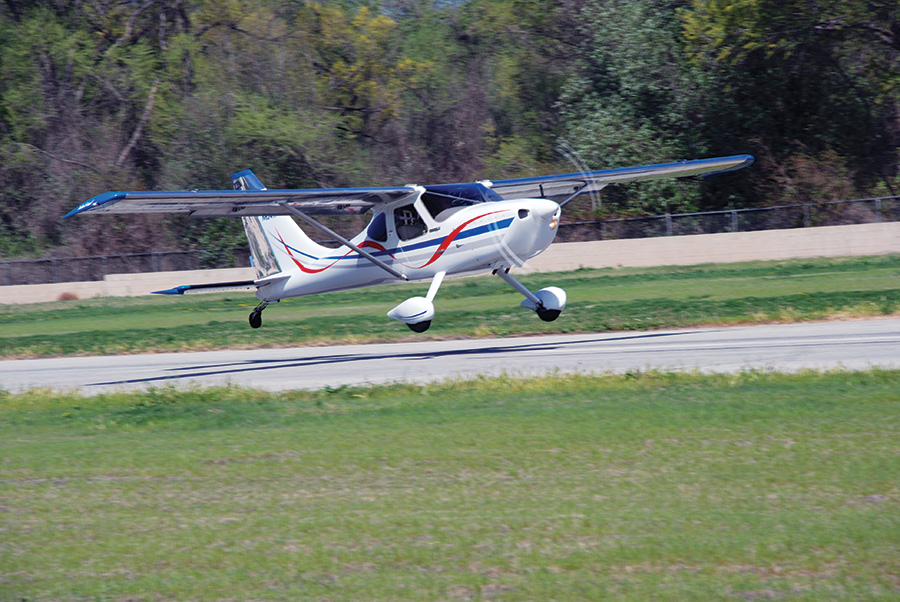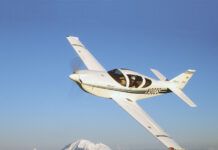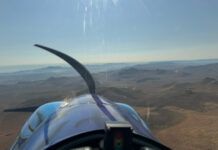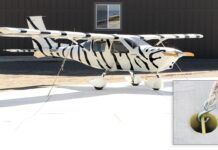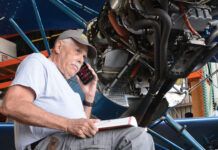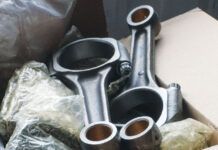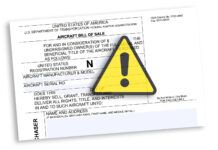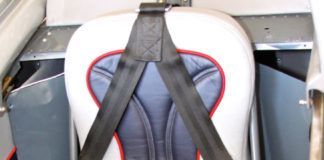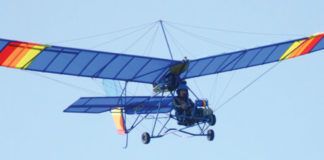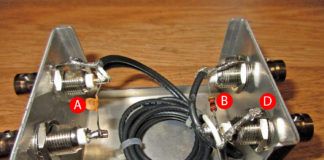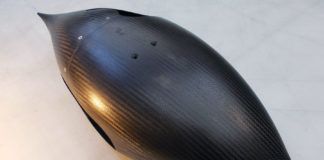More and more used Experimental airplanes come on to the market each year as more planes are built and more owners decide to upgrade or downgrade from their present planes. Many buyers see the potential value in an Experimental airplane, but do not wish to go to the trouble of building one themselves. This makes for an active and potentially attractive market in used Experimental airplanes. If you are one of those potential buyers, the question becomes, what do I need to look for in a used Experimental airplane? That question turns into a list of questions that all need answers before you sign on the dotted line.
Even if the seller will not allow a complete condition inspection prior to the test flight, it is still a good idea to at least take off the cowl and have a look.
Finding a Good Plane to Buy
Once you have decided on a particular type of plane to buy, you need to find a good one. Start participating in the owner/builder forum for the particular plane you are considering. Most planes will have an online forum dedicated to them. If the plane you are considering does not have such a forum, that alone is a good reason to consider looking at a different model. Owner support groups are vital for getting information to owners and builders. You will be at a real disadvantage if no such group exists for the plane you buy.
Once you have joined the group, read the archives and see what issues have come up in the past. There is usually a wealth of knowledge stored there. That information may encourage you to press on with your purchase or look elsewhere. It will also help guide your actual pre-purchase inspection by alerting you to potential problem areas. When you are comfortable with the group, let them know what you are looking for. Many times a plane will become available through these forums before it ever makes it to Barnstormers or Trade-A-Plane. By connecting with one of these groups, you have access to the best information available to make your decision a well-informed one.
Another benefit of connecting with a builder forum is that it will be your best source of help for your pre-purchase inspection. When considering the purchase of any Experimental airplane, you should always try to get the help of someone who has actually built the same type of plane to help you check it out.
If a scene like this greets you when you remove the cowl, it might be a good idea to look for another plane. This poor maintenance can only raise doubts about the rest of the plane.
Combing the Ads
Outside of the builder forums, Barnstormers and Trade-A-Plane will be the best places to look for planes for sale. As you read the ads, you will be looking for four key items: condition, equipment, location, and price. You may not find all of this information in any one ad, but this is where you will need to start.
A good ad will list the year the plane was built, the hours on the engine and airframe, which may not be the same, and whether or not the plane has suffered any significant damage. Abbreviations such as TTSN or just TT (total time since new), SMOH (hours since major overhaul), and NDH (no damage history) are common and usually easily decipherable once you get the hang of things. Newer planes with fewer hours are obviously more desirable and more expensive, all other things being equal. If the plane was built with an overhauled engine instead of a new engine, that will likely reduce its value somewhat, but not too much if the overhaul was done well by a reputable engine builder. Damage history is the trickiest part to evaluate. Damage lowers the value of a plane even if it was completely and perfectly repaired. The question is, by how much? The answer to that is not easily quantifiable, but remember that damage history sticks to a plane throughout its life. When you go to sell that plane someday, you will have to discount the sales price to the next buyer. On the other hand, not every owner will record damage in the logbooks. This is something you will need to look for when you do your physical inspection.
This very nice but now obsolete panel contains some components that are no longer serviced by their manufacturers, and it will not comply with coming requirements for ADS-B. These are things to consider when purchasing a used plane.
Equipment such as desirable accessories, and especially avionics, will raise the price of a plane. Just be sure they are in good condition and in compliance with current and upcoming regulations, especially if you plan to fly IFR in your new plane. Specialized equipment such as floats will usually be priced separately. These may add great value for some customers and be of no interest to others. Just be aware that avionics must be approved for IFR use to be legal, even in an Experimental. There are many nice glass panel systems out there that look great, but are not certified. Be sure you understand what you are getting before you give up your hard-earned money.
By cutting open the oil filter, you can gain some valuable knowledge about the internal condition of the engine. A seller may not wish to have you do this test or the compression test until some earnest money has been offered and a deal tentatively made.
The farther away your dream plane is, the less dreamy it will become if you are trying to buy it. It costs money to go far away to check out a plane, and more money to get someone to go with you to help with a pre-purchase inspection. There is often a bit of “slippage” between the description a seller offers and the actual condition of a plane when you get there to look it over. Be prepared for some disappointment if you have to travel a great distance to check the plane out. This is another place where membership in a builder forum can pay off. There may be someone close by who can check the plane out for you before you travel a great distance. Location can also alert you to conditions that may be more likely to produce corrosion or other abnormal wear.
Price is usually the first consideration of a buyer, but it is listed last here because, at the very least, it should not be first. Price is the one thing that is usually negotiable. Condition, equipment and location are fixed. If these items are not right, the price doesn’t really matter. If price is the main focus of your search, you will likely end up short in one or more of the other categories. Just remember that it is almost always cheaper in the long run to get a better plane and pay more than to get a plane that needs repairs or upgrading and do it yourself.
This badly damaged cam and lifter is usually the result of corrosion in a seldom-used engine. You will not be able to see this in a condition inspection, but metal in the oil filter could tip you off to such a problem.
The Pre-Purchase Inspection
The pre-purchase inspection, that examination you need to do once you are actually standing next to the plane you hope to buy, has three parts in this order: review of the logbooks, physical inspection, and the test flight.
Before you make arrangements to inspect an airplane, be sure you have a clear understanding with the seller that you will need to review the airframe, engine, and propeller logbooks before you can proceed further. Ideally this is done before you travel to inspect the plane because there may be things there that will make you decide to forego the trip. The logbooks will show the model number and serial number of the engine and prop and the serial number or kit number of the airframe. With this information you can see if these components have been the subject of any service bulletins or airworthiness directives (ADs). Once you are the owner, you can choose to thumb your nose at service bulletins and airworthiness directives in most cases, but as the buyer, you will want to know how these things affect the safety of the plane you are about to buy. Compliance with these items should be noted in the logbooks. If they are not, it is worth asking, why not? The best place to find out if there are any ADs that apply to the engine or propeller that you are considering is to go to the FAA web site and look under Airworthiness Directives. Each kit manufacturer should have service bulletin information for their kits. This is often on their web site, but sometimes you will need to call them.
A differential compression test should be part of your pre-purchase inspection, with the seller’s permission, of course. This quick and easy test reveals much about the condition of the engine pistons, cylinders, and valves.
While perusing the logbooks note any significant repairs such as a replaced cylinder or an alternator. Look for regular maintenance at frequent intervals over time. A big time gap between services is worth exploring further. There may be a perfectly good reason why a plane didn’t fly for several months or more, but it may also alert you to damage that took time to repair, but was not noted. In any case, a lack of regular flying invites corrosion, especially engine corrosion on things like cams and lifters. These may not be apparent during a physical inspection but they can cause big, expensive problems if they show up later.
Be on the lookout for alterations that the owner may have made. Some alterations are desirable and others aren’t. These can be deal killers in some cases. Once you have thoroughly reviewed the logs, you should have a pretty good idea of what to look for in your physical inspection.
When it is time to begin the physical inspection, it is time to have a talk with the seller about what he or she is willing to let you do. If you have not yet made a deal and put down a deposit, the seller may not be willing to let you take things apart or perform invasive procedures such as a compression test or removing and cutting open an oil filter. The seller may insist that you make a firm offer subject to a physical inspection and put up some earnest money. This will have to be negotiated on a case-by-case basis. Without a firm deal in hand, the seller may limit your physical inspection to a thorough preflight. On the other hand, if you have put up money and made a deal, an examination similar to a yearly condition inspection is in order. (See October and November 2014 KITPLANES for more on condition inspections.) Who will perform this and where it will be done are subject to negotiation, but be sure to be there to take part in the process or have a trusted representative do it for you. A pre-purchase inspection performed by the seller or his mechanic isn’t worth much unless you actually witness the whole process.
Once the physical inspection is complete, you may have found things that need to be fixed right away, or you may have found things that make the plane worth less to you than your initial offer. You will have to negotiate these things with the seller or possibly walk away from the deal.
The Flight
If—and only if—you have found the plane in a safe and airworthy condition, it is time for a test flight. Make a list of things you want to check out on the flight. Any questionable items found previously should be near the top of the list. The big questions are: Does it perform as per expectations—easy to start, reasonable ground roll, good climb, and general feel of controls? Once at cruise does its speed seem about right? Will it fly hands-off? Do things like avionics and the autopilot work?
The test flight should only come after you are satisfied that the plane is in a safe and airworthy condition.
If you are satisfied with the basic flying characteristics and systems of the plane, it is time to explore some slow flight and stalls. If you or the seller are not confident stalling the plane, that may tell you something right there. If necessary find a mutually agreeable instructor to fly with you and perform these maneuvers. If that doesn’t allay your fears, then perhaps you should be looking at buying some other airplane. If there is something about this particular plane that makes you uncomfortable, then go look for another example. If there is something about the type of plane that makes you nervous about exploring its entire normal flight envelope, then go look for another type of plane. This is going to be your plane. You need to be comfortable with how it flies. If you aren’t, go buy a different plane. Do not talk yourself into a “scary” plane just because it is fast or looks good.
The Purchase
Assuming the plane of your dreams has survived the gauntlet of the pre-purchase inspection, it is time to get serious about parting company with your money. Let AOPA do a title search for you to make sure there are no liens on the plane. If a bank or maintenance shop is owed money and has secured their debt with a lien on the plane, you will need to get that cleared up first. Don’t get in a hurry and skip this important step. Then make sure your insurance company is on board. You and the plane are probably most vulnerable on its flight home. This would not be a good time to fly without insurance.
You will need an FAA Form 8050-2 Aircraft Bill of Sale. This form is available online, so be sure to have one with you when you get ready to close the deal. You can also get one from your local FSDO. Do whatever you need to do to make your bank happy if you are getting a loan to make the purchase. Then sign on the dotted line and get ready to enjoy your new plane.
Making a good purchase is about patience and diligence. Do not get in a hurry; take the time to find the right plane. It is out there somewhere, but it may take some time to find it. Then do your homework. Don’t let anyone rush you or talk you into cutting corners during the pre-purchase process. Lastly, be sure to take advantage of the resources available to you from AOPA, EAA, builder forums, and fellow Experimental airplane owners and builders at your airport. Those who have been through this before may not have all the answers, but they probably know what questions to ask, which is the next best thing.

